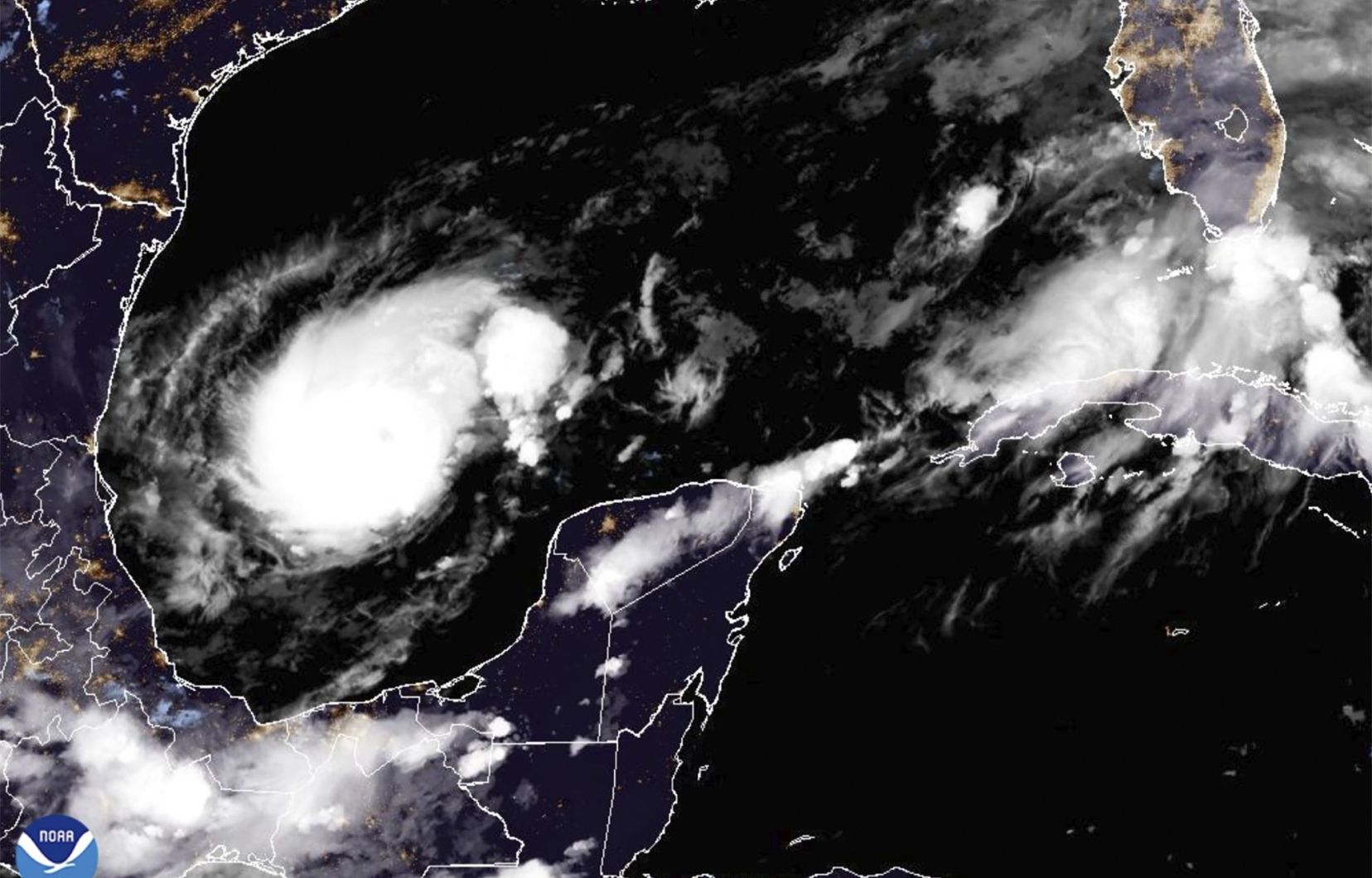Milton rapidly strengthened into a Category 5 hurricane Monday on its path toward populous centers of Florida, including Tampa and Orlando, setting the stage for possible mass evacuations less than two weeks after the catastrophic hurricane Helene submerged the coastline.
An alert was sent to parts of the state of Yucatan, Mexico, and much of the west coast of Florida was placed under surveillance.
The storm is expected to maintain roughly its current strength for the next two days, according to the National Hurricane Center in Miami. Helene was also Category 4 when it landed in northern Florida.
Milton was a Category 4 storm with sustained winds of 250 km/h over the southern Gulf of Mexico Monday morning. Its center could make landfall Wednesday in the Tampa Bay area, and it could retain hurricane characteristics as it crosses central Florida toward the Atlantic Ocean.
This would largely spare other states ravaged by Helenewhich killed at least 230 people on its path from northern Florida to Appalachia.
State hard hit
Milton is a bit atypical, because it formed very far to the west and is expected to cross the entire southern Gulf, according to Daniel Brown, hurricane specialist at the national center.
“It is not uncommon to have a hurricane threat in October along the west coast of Florida, but for it to form throughout the southwest Gulf and then strike Florida is a little more unusual, Mr. Brown said. Most of the storms that form in October and hit Florida come from the Caribbean, not the southwest Gulf, he said.
Meteorologists warned that a storm surge of 8 to 12 feet could occur in Tampa Bay and that flash and river flooding could result from 5 to 10 inches of rain on the Florida mainland and the Keys, with up to 38 centimeters in places.
Florida Gov. Ron DeSantis said Sunday that while it remains to be seen where Milton hit, it was clear the state would be hit hard.
“I don’t think there’s a scenario where we don’t have major impacts at this point,” he said.
Massive evacuations to be expected
About seven million people were asked to evacuate Florida in 2017, when the hurricane Irma fell on the state. The exodus had blocked highways and caused queues of several hours at gas stations that still had fuel. The event had frustrated several evacuees, some of whom had vowed not to evacuate again.
“We are preparing […] to the largest evacuation we have experienced, most likely since 2017, hurricane Irma “, said Kevin Guthrie, general director of the Florida Division of Emergency Management, during a press briefing on Sunday.
The Tampa Bay area is still cleaning up the extensive damage caused by Helene and its powerful wave. Twelve people died when Helene submerged the coast, with the most severe damage recorded along the narrow 20-mile chain of barrier islands stretching from St. Petersburg to Clearwater.
DeSantis expanded his state of emergency declaration Sunday to 51 counties and said Floridians should prepare for more power outages and disruptions by ensuring they have a week’s worth of food and water and they are ready to hit the road.
With the arrival of Milton to hurricane status, this is the first time the Atlantic has experienced three simultaneous hurricanes after September, according to Phil Klotzbach, a hurricane expert at Colorado State University. There were four simultaneous hurricanes in August and September.
As many as 4,000 National Guard troops are helping state teams clear debris, DeSantis said, and he ordered Florida teams sent to North Carolina after Helene to return in preparation for Milton.
FEMA is also preparing
Federal Emergency Management Agency (FEMA) Administrator Deanne Criswell defended her agency’s response to hurricane destruction Heleneafter Republicans’ false claims, amplified by former President Donald Trump, created a misinformation frenzy in devastated communities.
These conveyed certain conspiracy theories, in particular one claiming that Washington was delaying the delivery of aid to affected regions whose elected officials are Republicans.
“This kind of rhetoric doesn’t help people and it’s a shame that we’re putting politics ahead of helping people,” Criswell told ABC’s George Stephanopoulos.
Despite this, Ms Criswell said the agency was already preparing for Miltonwell before it is known exactly where the storm will move across the Florida peninsula.
Federal disaster assistance has exceeded US$137 million since Helene hit more than a week ago, one of the largest mobilizations of personnel and resources in recent history, FEMA said Sunday.
According to FEMA, the White House and the Department of Defense, some 1,500 active-duty troops, more than 6,100 National Guardsmen and nearly 7,000 federal workers have been deployed, shipping more than 14.9 million meals, 13.9 million liters of water, 157 generators and 505,000 tarps, as well as the approval of more than US$30 million for housing and other assistance to more than 27,000 households.
“My administration is sparing no resources to support families as they begin their journey to rebuilding,” President Joe Biden said. We will continue to work hand-in-hand with local and state leaders, regardless of political party and however long it takes. »
